Types of Vegetable Cuts
As an Amazon Affilate, I earn commission on qualifying purchases.
One of the first things we learned in culinary school were the different types of vegetable cuts. This mostly involved practice and repetition to learn the right techniques. Over and over we’d cut the vegetables into julienne cut, brunoise, or dice to practice our cutting skills. Vegetable cuttings that were too large, or not perfect, were not wasted, they’d end up soup production or in a stock. Small cubes, large dice, or fine dice, we’d strive for uniform pieces. These basic skills are how we honed our knife skills. (Pun intended)
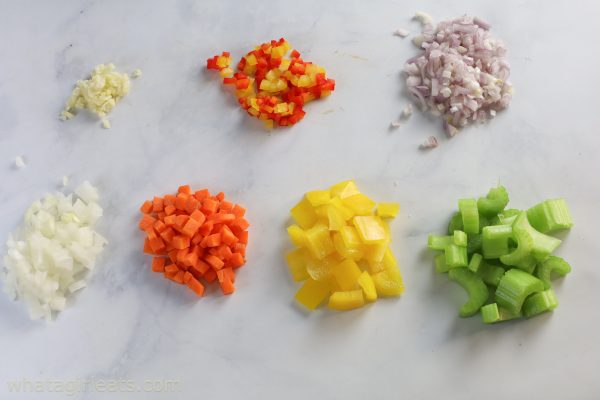
Types of vegetable cuts
Why worry about uniformity when you’re just cooking at home? Besides visual appeal, uniform cuts of vegetables ensure even cooking time. A thick, rough chop will take longer to cook than thin strips of vegetables.
Stick cuts
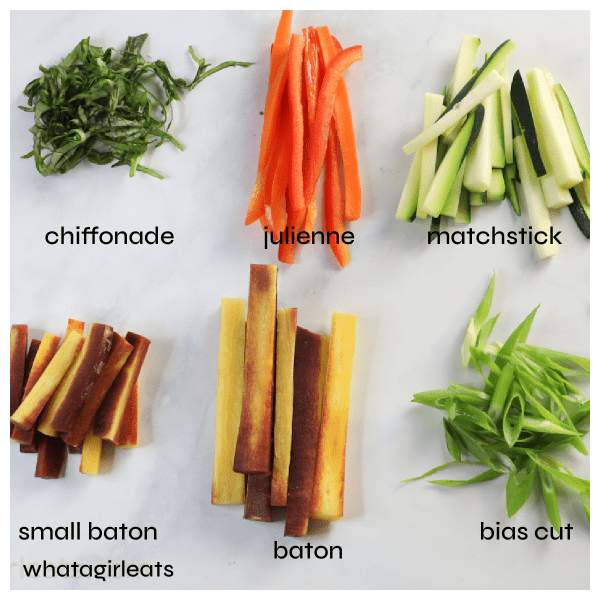
The thinnest of all is the chiffonade cut. It is mostly used with leafy greens, or herbs like basil, and resembles thin ribbons.
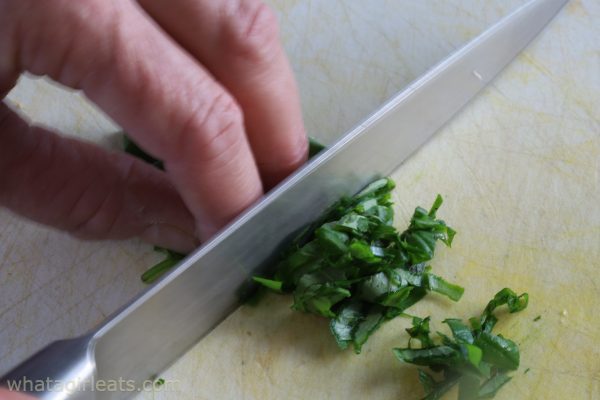
The next cut is the julienne cut. The julienne cut is narrow, thin slices about 1/16″ thick and can be anywhere from 1 to 2 inches in length.
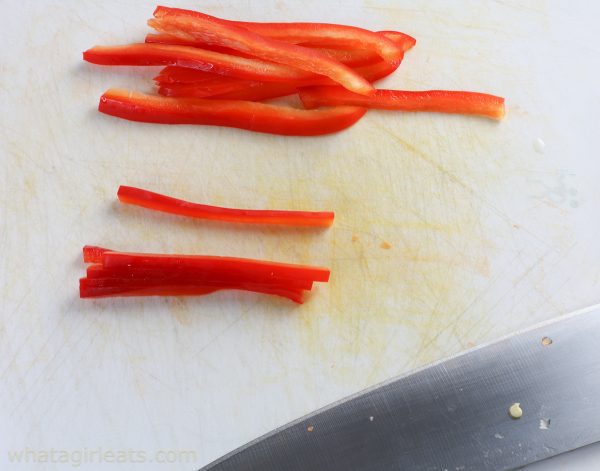
The matchstick cut is wider than julienne, but can be the same length.
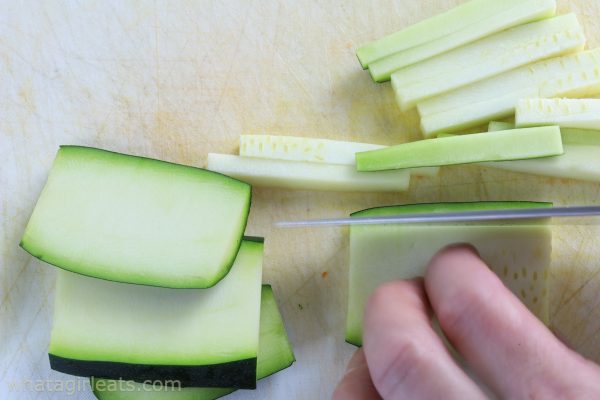
To make the matchstick, first trim the ends of the vegetable and make even slices. Line up the slices and make uniform slices.
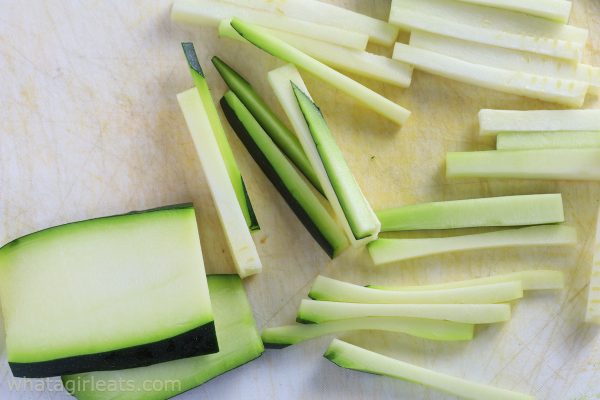
Lastly, there’s the baton cut. It’s the widest cut. The baton is generally about 1/4″ thick, and is perfect for sauteed root vegetables, vegetable sticks or crudités, and French fries.
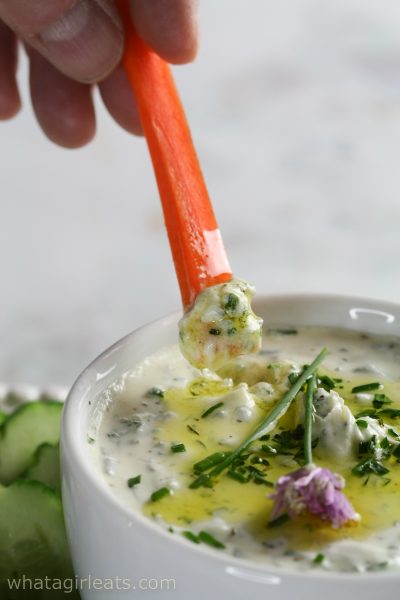
The length can vary from 1 to 3 inches, depending on what recipe you’re using it in.
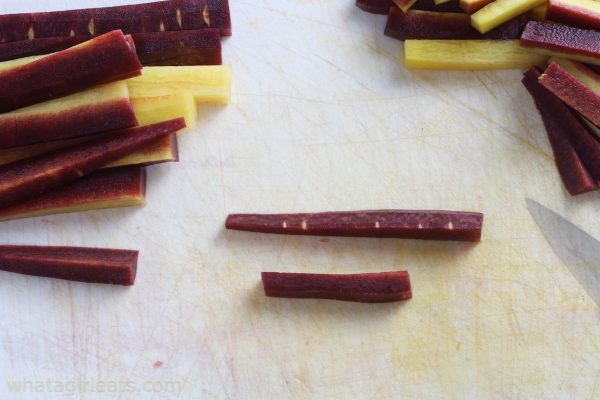
Cube cuts
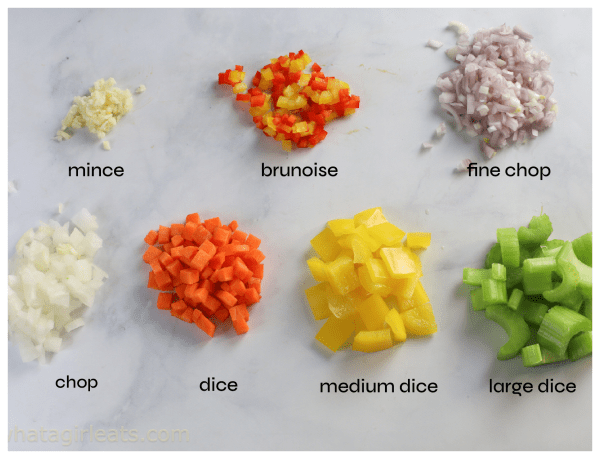
The smallest of all of the cube cuts is the brunoise cut.
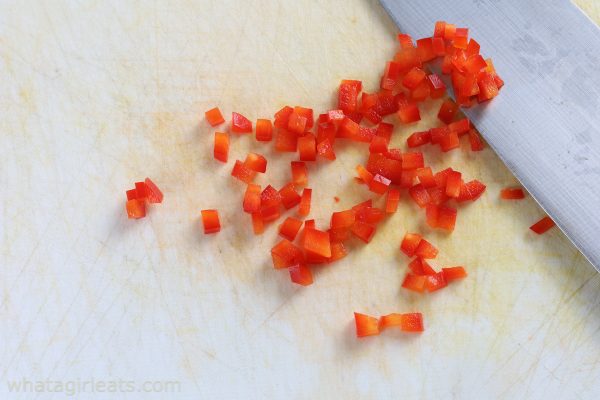
This small dice around 1/8″ is perfect for garnishes. I’ve used the brunoise cut to garnish Spicy Shrimp. In this dish, I’ve used the chiffonade cut for the purple cabbage and basil, and the brunoise cut for the bell peppers to resemble “confetti”.
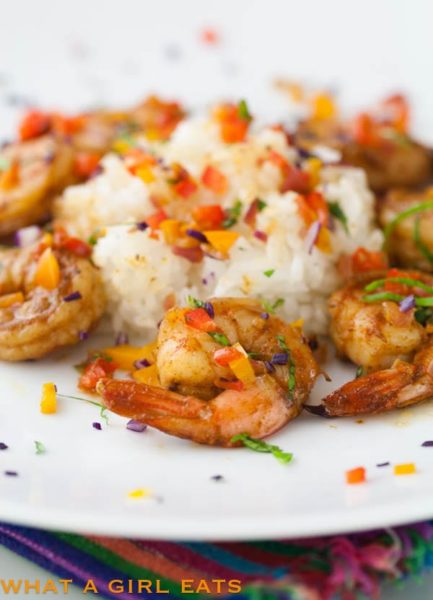
Dice is the next cube shape. It’s around 1/4″. Medium dice is larger, at around 1/2″, these are bite-sized pieces.
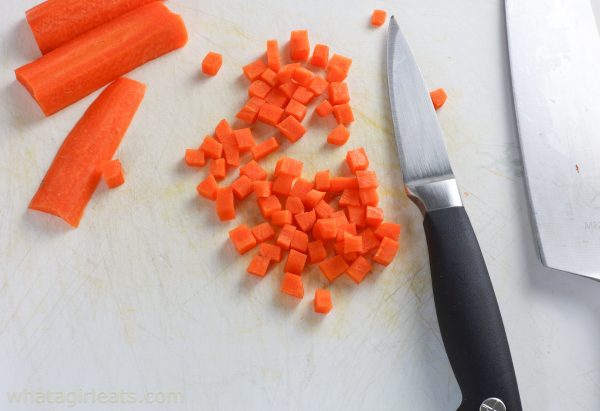
Followed by large dice which can be 3/4″ or larger. Any of these dice cuts are great in Soups, Pot Pies or Stir Fry or in Salads.
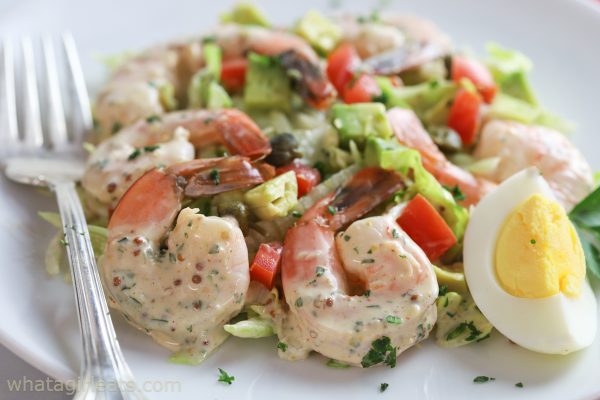
Cutting an onion
Start by cutting the onion in half. Leaving the root end intact.
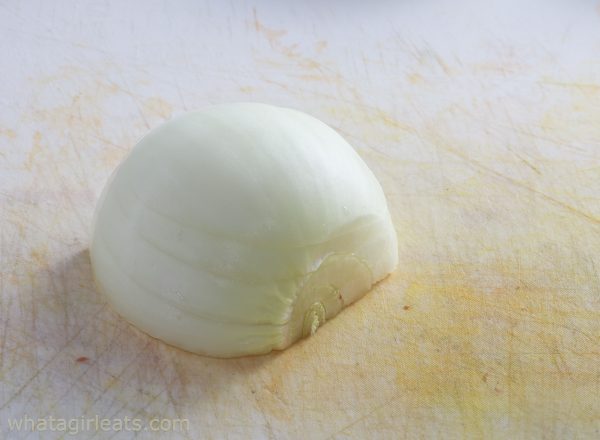
With curled fingers, make vertical slices.
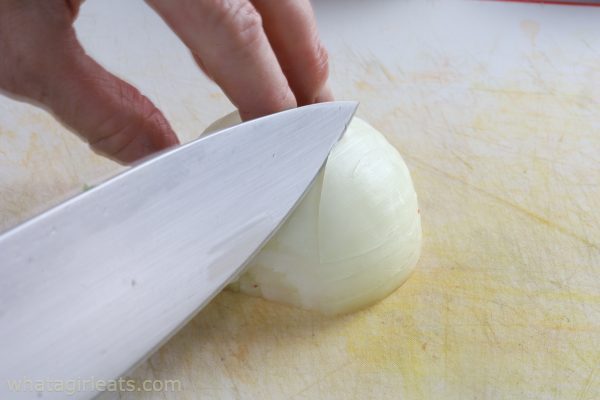
Next make horizontal slices going almost through the onion, but stopping just before the root end. This will keep onion together.
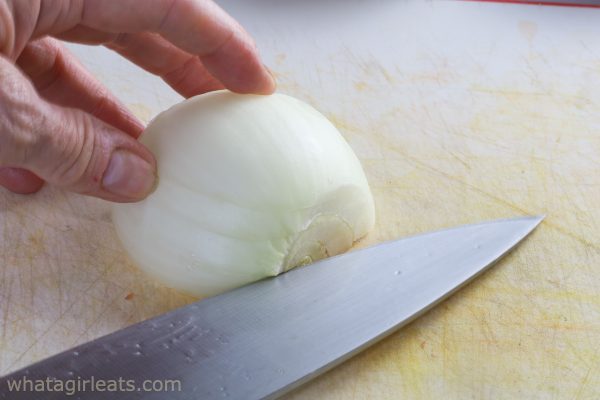
Lastly, roll the knife from tip to shaft in a rolling motion to cut the onion into a dice.
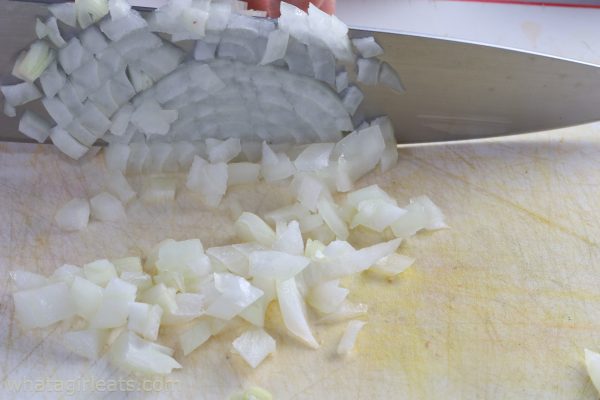
The result is a uniform dice.
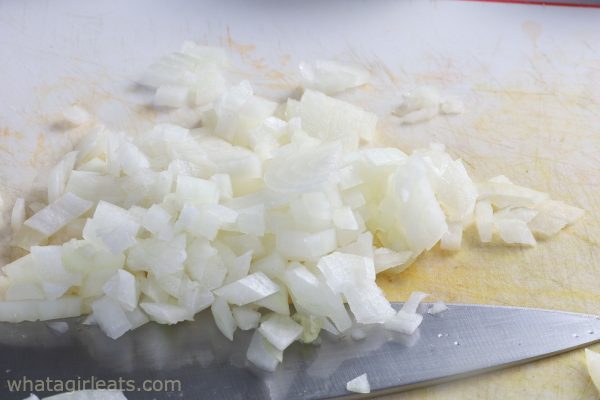
Chop and Mince
The finest is the mince. Mince is used for garlic, ginger or herbs.
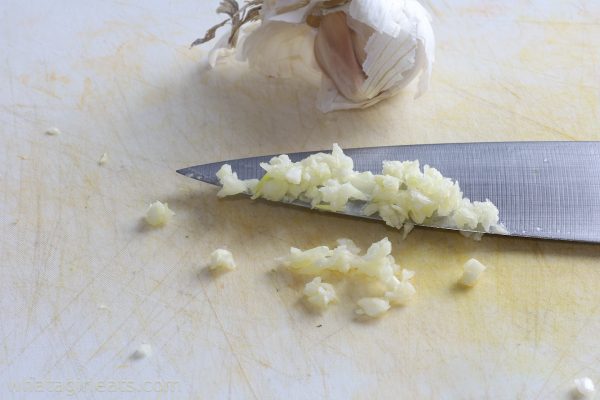
A fine chop is somewhat larger, but is still uniform in size. Use a coarse chop when it won’t be seen in the finished recipe. I the coarse chop in Pureed Soups.
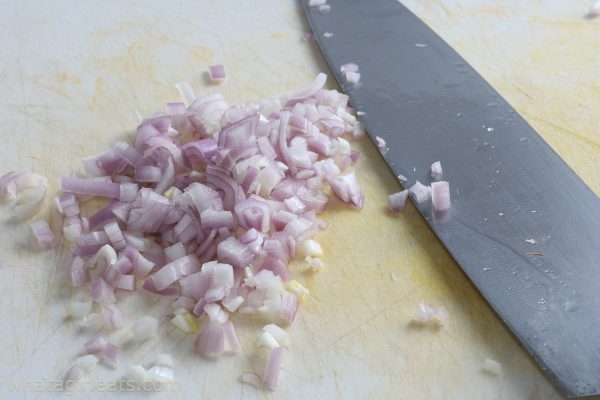
Lastly, the diagonal, or bias doesn’t fit in any of the above categories.
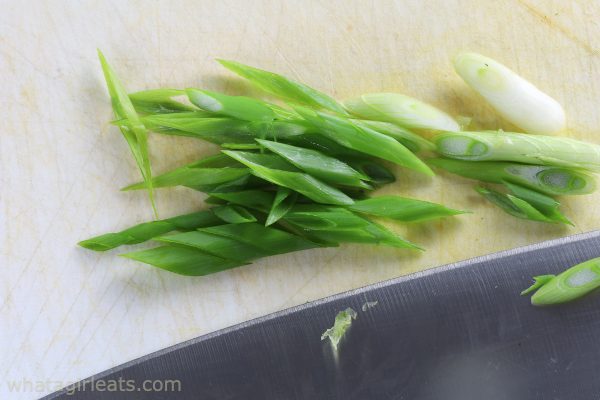
The bias or diagonal cut is used in Asian dishes as a garnish.
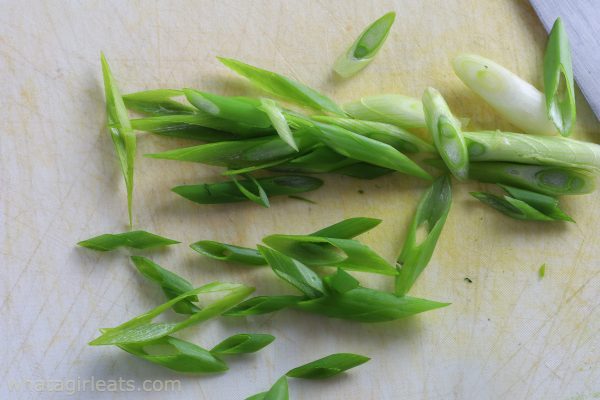
The art of slicing
There is an art to learning how to without feeling as though you’re going to cut yourself. Here are a few tips.
- Chopping board. I love a wooden cutting board, however, these plastic cutting boards are what I use for meat and poultry because I can throw them in the dishwasher.
- A flat surface. If the cutting board wiggles, your knife can slip. To keep the cutting board steady, dampen a dish cloth and place it under the cutting board.
- Curled fingers. Make sure the fingers on your non-dominant hand curl and come to the edge of the knife blade.
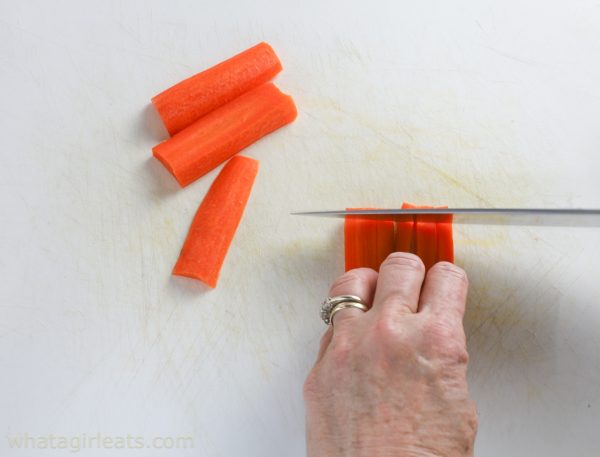
- When cutting, place the tip of your knife on the cutting board and use a rocking motion. Don’t lift the knife off of the board.
Choosing the right knife
A sharp knife is the best tool in the kitchen. A good knife can last a lifetime longer. I still have my grandfather’s chef knife from the 40’s! When I purchased my knives in 1983, I spent quite a bit of money on them, and still have all of them 40 years later. But you don’t have to spend a lot of money to get a good knife. Here’s a guide to some basic knives that every kitchen should have.
- Chef’s knife. A professional chef knife is the workhorse of commercial kitchens. However, it’s also one of the first knives you should buy if you are a home cook. There are several sizes of chef’s knives. I have an 8″, a 10″ and a 12″ chef’s knife. I pick one depending on what I’m cutting. Think of a knife like the fulcrum it is, the tip touches the cutting board and moves up and down in a rocking motion. The larger the vegetable, the longer the fulcrum should be This is my first top of the line 8″ chef’s knife from 1984, and here’s a reasonably priced 10″ chef’s knife I recently bought.
- Paring knife. Probably the second most used knife in the kitchen is a good paring knife. I have one good 4″ paring knife and also some of these little cheap paring knifes. These are good for teaching kids knife skills and if one accidentally ends up in the bin, it’s not a huge loss.
- Santoku knife. The santoku knife I first got in the early 2000’s, but I use it interchangeably with my chef’s knife. I love the wooden handle.
Beyond the basics
- Boning knife. This knife does exactly what it says, it’s what butcher’s use to bone poultry or beef. Boning knife.
- Flexible filet. The flexible filet knife also does exactly what its name says. It’s got a flexible blade and is great for boning and fileting fish.
- Serrated knife. This highly rated bread knife is super inexpensive.
- Steak knives. I’ve never had a set of cutlery that included a knife that could do anything more than spread butter on bread. I love these beautiful Laguiole steak knives with the sweet little bee on its handle.
- To sharpen a dull knife you can use a steel or honing rod. I also like this inexpensive knife sharpener.
Extra “gadgets”
- Microplane. I love this for zesting citrus.
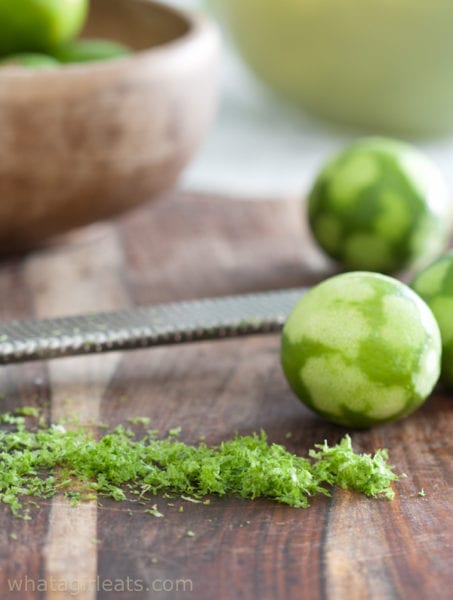
- Tomato “Shark“. This is the nickname we gave this nifty tool in culinary school. I use it for hulling tomatoes and strawberries.
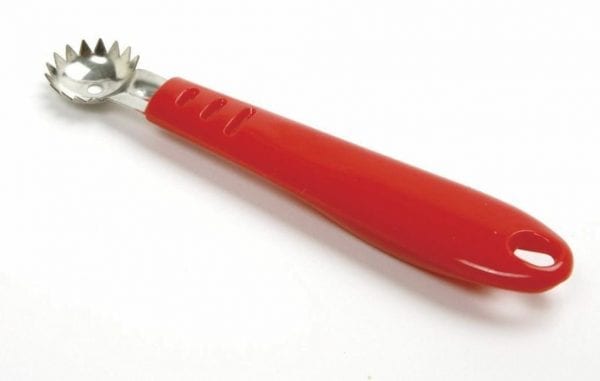
- Garlic wheel. This is probably one of the few shortcuts I take, because it minces a couple of cloves of garlic in less than 15 seconds. I prefer it to a garlic press which tends to mash and juice the garlic cloves. The garlic wheel has teeny little blades inside that mimic knife cuts.
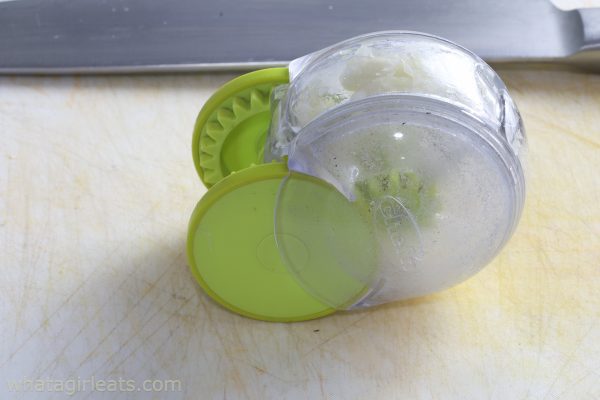

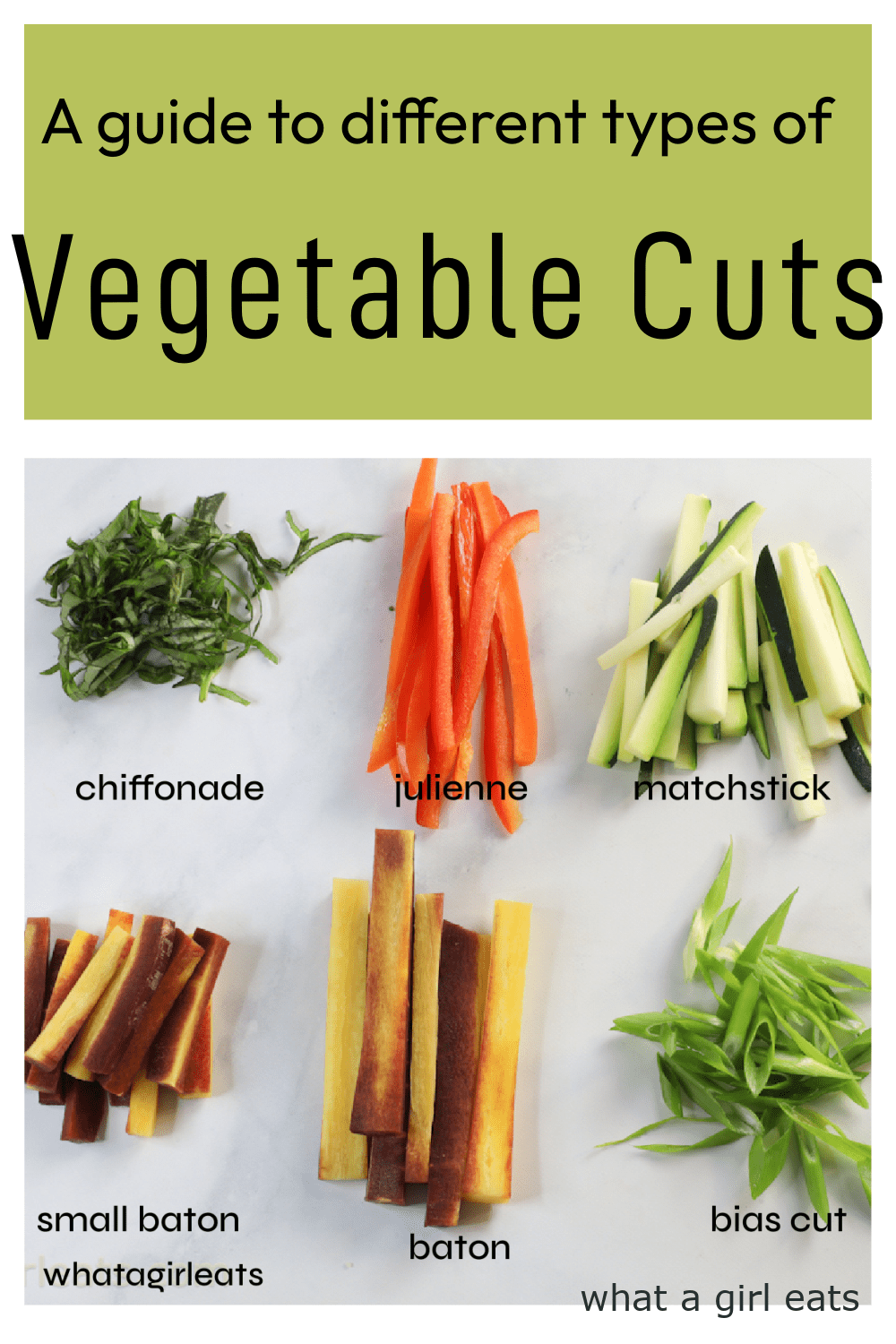

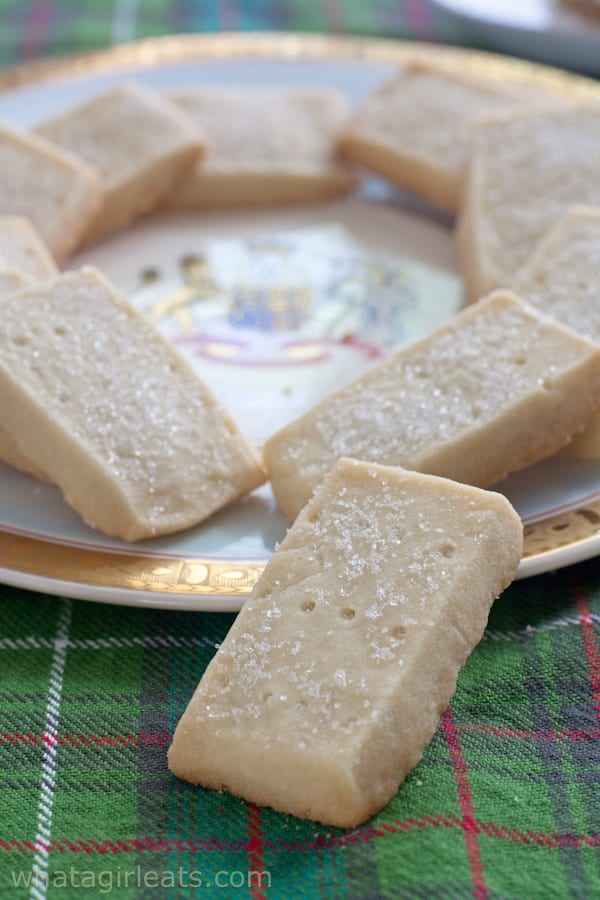
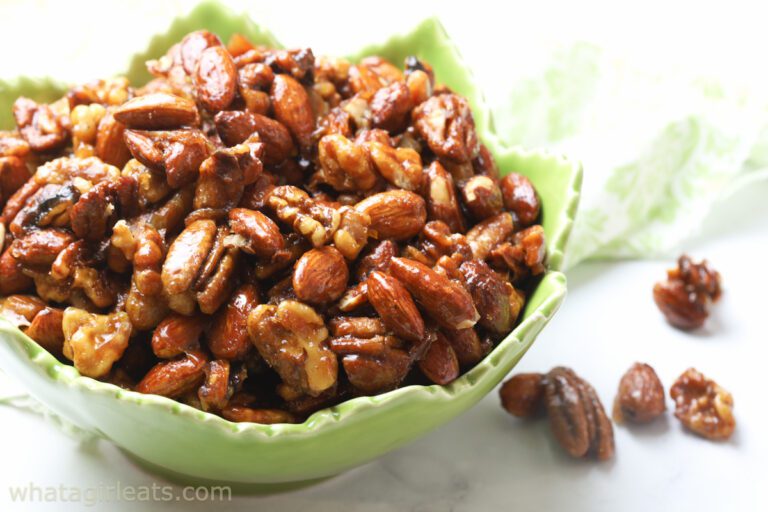
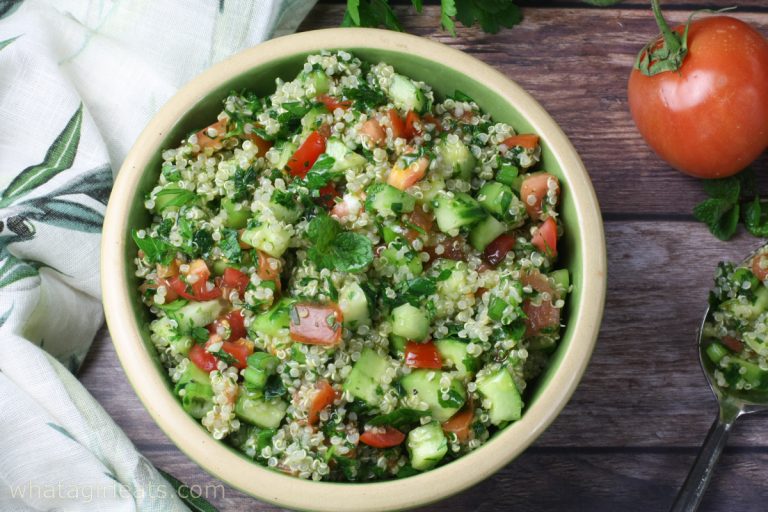
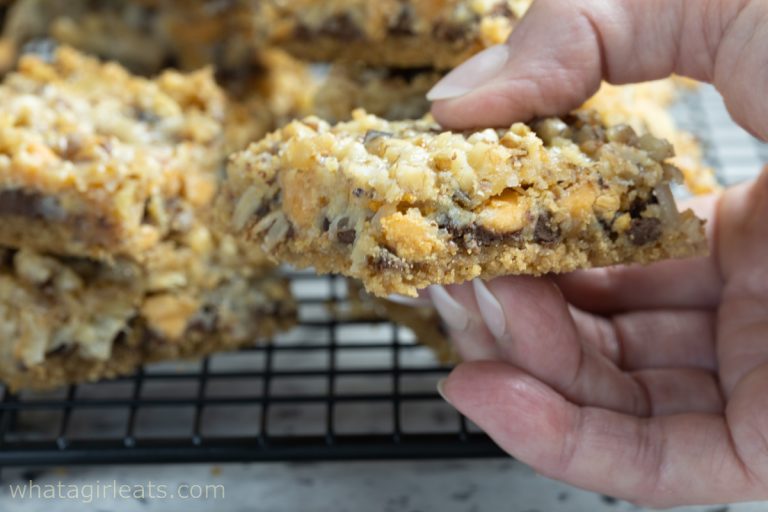
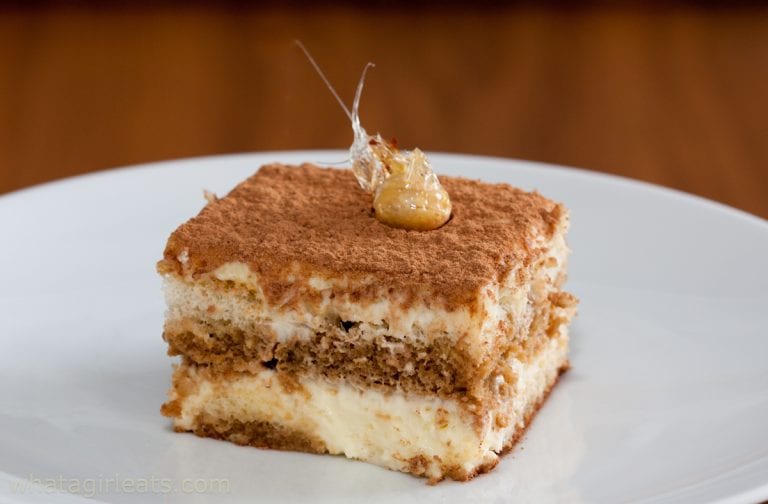
Excellent article on foundational basics that truly make a difference both in appearance but cooking times.
You could fill a KETTLE of veggies perfect for soup or salads!
Love that you’ve given a whole guide to the different cuts and tools. Beautifully done, Cynthia!